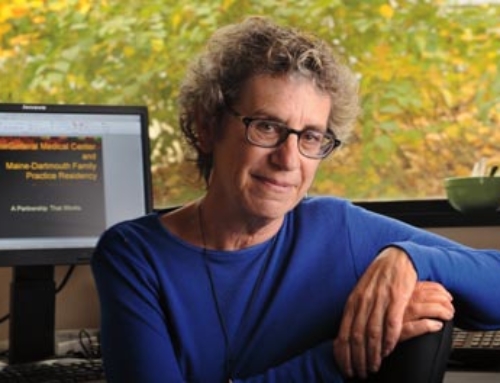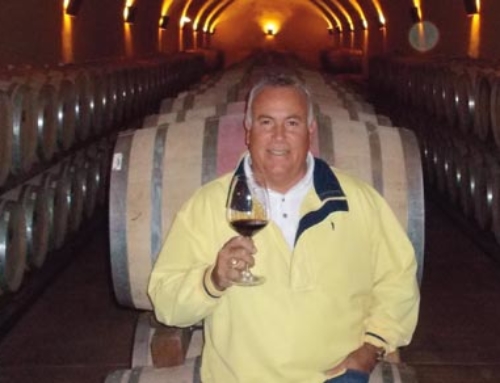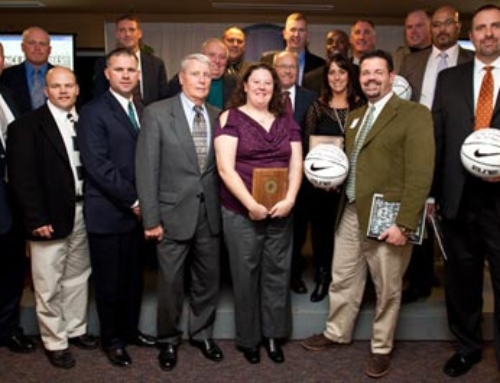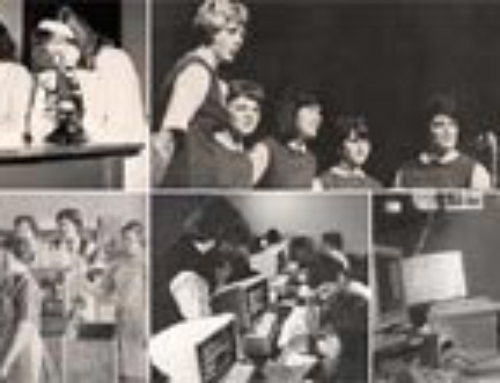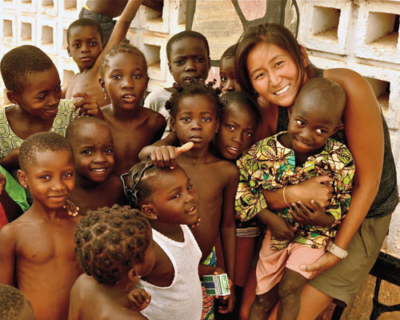 At the heart of the Saint Joseph’s experience is the lesson in providing community service.
At the heart of the Saint Joseph’s experience is the lesson in providing community service.
This spring, the College was formally inducted into the 2013 President’s Higher Education Community Service Honor Roll by the Corporation for National and Community Service. Awarded annually since 2006, after the outpouring of relief that followed Hurricane Katrina, the distinction pays tribute to the hours of volunteerism of the College’s students, staff and faculty.
And if we step back just a little bit, we’ll see that the gracious hands of Saint Joseph’s alumni reach all around the world too, just as the current students do. After examining what the Saint Joseph’s community does to give back, it’s no wonder Saint Joseph’s was one of only three colleges in Maine to receive this national distinction.
There isn’t always a direct path to leading a life of giving. For Brittany Rauscher ’06, an accounting graduate, her journey almost started off on an entirely different path. “When I was young,” Rauscher says, “I measured success by the amount of money you made. I didn’t know what I wanted to do.” But for this former Monks basketball star, things changed after a trip to Thailand in 2008.
Rauscher was teaching English in South Korea, taking occasional trips to Japan and Thailand, when something happened that stays with her today. “We were in Bangkok, and this one boy stuck out to me. Part of his face was burnt and he was asking for money. My friend told me that the money would go to the mafia.
“And that set the groundwork.”
From there, Rauscher, who now works as a residential service coordinator at Creative Work Systems in Portland, Maine, set off on what would be one of her most recent international acts of reaching out to a community.
“In March of 2012 I joined an overlanding truck and traveled throughout 25 different African countries for seven-plus months. I decided to end my travels early … to volunteer for Soft Power Education, an NGO (non-government organization) based in Jinja, Uganda.
“I would go to a special needs school where students had mental, developmental or physical disabilities. I worked with one student who had cerebral palsy, picking bottle caps up and putting them into a bowl.”
Rauscher has a lot of strength still. And she’s keeping her experiences close to her, even today. “My time in Korea taught me to be very open with the world and my life,” she says, “to take some risks and have more experiences.”
Getting these kinds of experiences at an early age is paramount for Saint Joseph’s online instructional designer Tony Schwieterman. For the last three years he’s taken his entire family to the Ronald McDonald House in Portland, Maine. One Saturday every month, Tony, his wife, their two daughters, ages 11 and 13, and 5-year-old son spend a “two- to three-hour shift doing odds jobs, from cleaning to changing over rooms to a yearly Christmas card drive,” he says.
The Ronald McDonald House provides a place for families to stay while their children receive medical attention in town. According to their website, it’s a “home away from home” for these families. And for the Schwietermans, there’s a sense of belonging as well.
My children look forward to it,” Schwieterman says. “It’s not a chore. You can see they appreciate what they’re doing for others.
“None of our kids have had extended illnesses, and we were looking for something to get our kids involved with volunteering. This is our way of giving back.”
Volunteering is a family legacy for Tony. And just as he hopes to have an influence on his children, his upbringing had its own way of teaching him the value of donating time.
“My father passed away when I was 11,” Schwieterman says. After that, he had a Big Brother to guide him. And later, “My mother got me started with the Red Cross. We’d volunteer in nursing homes and long-term care facilities.” For the Schwietermans, family guidance and support go a long way to helping each other and others around them.
Just as Tony Schwieterman and his family work together as a group volunteering their time, groups from campus work together, focusing their energy on a specific goal. Student Education Association of Maine (SEAM) is a student club led by senior Kaela Plante ’13. This past year saw the club host two prominent events for communities in southern Maine.
“For the third year in a row we took part in an Outreach to Teach event in conjunction with the York County Retired Educators Association,” says Plante. “Our project took place at Hollis Elementary School in Hollis, Maine. There were seven Saint Joseph’s students as well as many retired educators, along with some students from the local high school and even a few teachers from Hollis Elementary.”
The group helped clear multiple gardens on the school’s grounds. “In addition to donating our time,” Plante says, “we donated over 800 gently used books and some school supplies that we collected.”
The club’s latest event happened right on the Saint Joseph’s campus. This spring, the club hosted a Read Across America night in the Harold Alfond Center. “We invited children from the local area to come join us for storytelling, crafts and snacks.” After a reading- and craft-filled night, the students held a book drawing, “in which all of the kids left with at least one book,” Plante says.
For as much time students spend on campus providing community service, they spend just as much time volunteering at a distance as well. In 1992, Sr. Sylvia Comer ’62 launched the first Spring Workfest as the College’s Campus Ministry director. Since then, students have volunteered their time for a week in March every year to provide support to communities throughout New England and Appalachia.
This year, students traveled to Indian Island, Maine, to work at the Penobscot Indian Island Reservation; Flatgap, Ky., to work with the Christian Appalachian Project; Camden, N.J., to work alongside other volunteers at The Romero Center; and to New Rochelle, N.Y., to provide building support with Jim Killoran ’80, executive director of Habitat for Humanity of Westchester County.
Students also volunteer their professional and physical support in Haiti and Guatemala every year on the College’s International Service Trips.
This year saw the largest number of participants since the first trip in 2004, with a total of 40 members from the College participating. In Haiti and Guatemala, they staffed medical clinics, built houses, distributed humanitarian supplies and operated children’s programs.
In addition to social and medical activities, team members in Haiti conducted workshops in computer, technology and business skills in the village of Blanchard, just a few miles outside of Port au Prince.
“It is truly life-changing,” says Catherine Carter ’13, “and you return home a different person. It doesn’t seem at first like what you do there will make a difference, but it does. Being part of something bigger than you’ll know is an incredible feeling, and I think everyone should experience that.”
All of these activities and more are supported by the staff and Director Frank Daggett ’80, ’07 at the College’s Mercy Center. Formed in 2010, the Center provides opportunities for students to integrate religious and moral principles with their academic work both on and off campus. The Center’s motto, “Service Leadership and Learning,” is a true reflection of the many great opportunities they provide for students.
As a representative for American citizens abroad and a champion for women’s heart health, Mikell Reed Carroll ’99 works with a community that is both always with her and everywhere else at the same time.
As a former employee of the U.S. Embassy in Nicaragua, Reed Carroll “worked in the American Citizen Services section of the Embassy,” she says. “One of my specialties was working with American citizens incarcerated in Nicaragua.” Reed Carroll, who also holds a Juris Doctor, “traveled to jails and prisons all over the country, visiting American prisoners to ensure that their human rights were not being violated, and sometimes attending their trials. I often brought them hot meals purchased with my own money…. I also worked to procure nearly $2,000 in private medical donations to assist prisoners with medical issues that were not being met within the prison system.”
She is also an official Ambassador for the American Heart Institute. “In my mother’s family, 100 percent of the women died from heart disease, and only one woman on my mother’s side has survived past the age of 60,” Reed Carroll says. “My mother had a heart attack at age 53 on New Year’s Day 2009. She survived because of organizations like the American Heart Association….” The second runner up at the 2013 Mrs. D.C. America Pageant, she’s led public awareness campaigns on heart disease, “hosting several educational and outreach events [and] raising money for the D.C. Heart Walk.”
At the core of those who volunteer their time lies an innate, sometimes unconscious desire to connect with another person just like the volunteer – whether this is apparent to them or not. Just as Mikell Reed Carroll connects with fellow Americans or those at risk for heart disease, so too do the students who participate in Saint Joseph’s Midnight Run each year find a connection with others.
On a freezing, February night, as the winds whip down the boulevards and alleys of New York City, a van full of Saint Joseph’s students, clothing, food and coffee arrives to make their rounds to a series of drop points in Manhattan.
“We left campus around 12:30 p.m.,” says Social Justice & Leadership Coordinator Kathryn Cody. “Seventeen students participated, and (Mercy Center Director) Frank Daggett and I drove the vans.
“We arrived first at South Presbyterian Church in Dobb’s Ferry to drop off our sleeping bags, put on two big pots of coffee, and do a reflection on homelessness and why people came on the trip.” What happens next is a series of rapidly unfolding moments of community outreach.
A volunteer group that organizes donations to the New York homeless population since 1984, Midnight Run allows students to visit locations in New York City to distribute food, clothing and hot drinks “not so much as an act of handing things down to people,” says Cody, “but as a handing of things over to people.” This year included four different locations across the island of Manhattan.
Can you separate education from community service projects? “It’s something that can and should go hand-in-hand,” says Cody. “What you experience in your community outreach should have an impact on the way you learn in the classroom, whether it makes you more grateful for the opportunity and work harder, or makes you look at the information more critically.
“Hopefully it’s not community outreach and education, but a constant integration of the two.”
Community Service by the Numbers in 2012
88,000 Pounds of food served or donated by Catherine’s Cupboard Food Pantry in Standish
400 Individuals served by students, faculty and staff over Spring Break Workfest
800 Saint Joseph’s students engaged in service learning and co-curricular community service projects
12,856 Hours dedicated to community service projects by students
1,500 Middle and high school students Michial Russell, Pearson’s Town Farm manager, instructed in organic garden design and care
Jim Killoran ’80: Giving Them His All
In a matter of days after Hurricane Sandy ravished the greater New York area in 2012, Jim Killoran headed down from New Rochelle, N.Y., to Breezy Point, on the western tip of the Rockaway peninsula in Queens, to begin what would ultimately turn into 38 straight days of providing relief. With contractor trash bags in hand, Killoran set out to do what he does best: serve others for the greater good. According to one report, by December 2012 he had cleared out over 220 affected homes. The workload has only recently begun to balance itself.
“I’m a tumbleweed,” Killoran says. “God throws me into the next disaster and neighborhood.” Killoran’s worked with Habitat for Humanity since 1986, from Paterson, N.J., to New York City and now in New Rochelle, N.Y., where he’s the executive director of Habitat for Humanity of Westchester.
Twenty-seven years later, after at least four natural disasters, where “every day is like six months,” Killoran still works at a daunting pace to provide as much support as he can, along with the help community members and students like Saint Joseph’s very own who travel down to New York each spring break for the annual Workfest week. “True education is to liberate students, to have them think of what they can do,” Killoran says. “Community service is the essence of life … we’re all here on Earth to help one another. That’s the foundation of the Saint Joseph’s education – that community service is important.”
In recognition of Killoran’s unyielding dedication to community service, the College will confer on him an honorary Doctor of Public Service degree at May’s commencement exercises.
It’s a fitting tribute to Killoran. “Saint Joseph’s became a family for me,” he says. “They encouraged me. I’m just a guy running around in construction boots.”
by David Svenson
